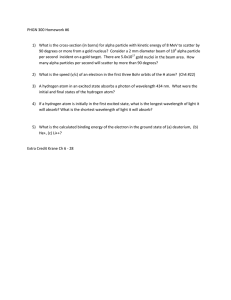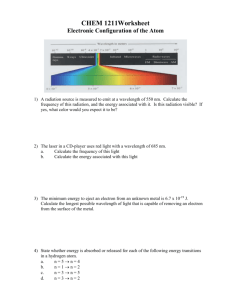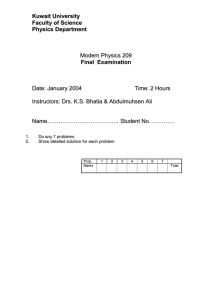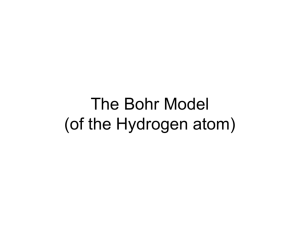Bohr Model of the Atom
advertisement
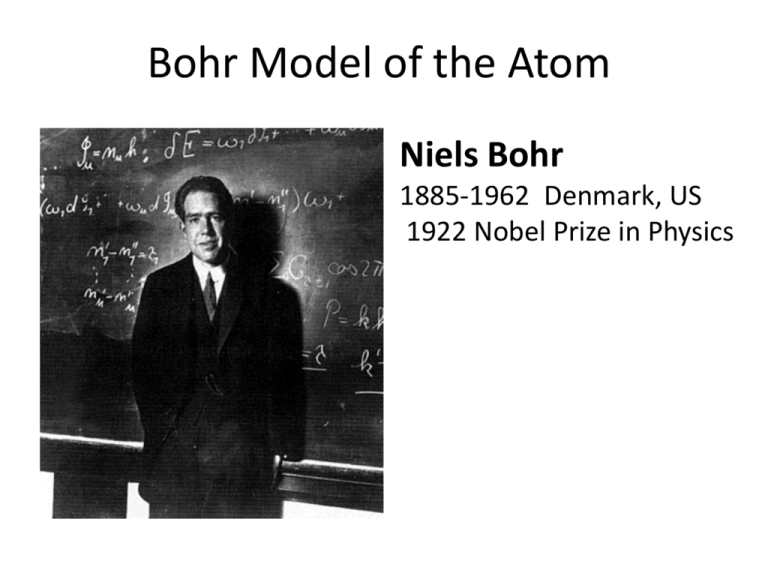
Bohr Model of the Atom Niels Bohr 1885-1962 Denmark, US 1922 Nobel Prize in Physics PHGN 300 Homework #6 continued 3) What is the speed (v/c) of an electron in the first three Bohr orbits of the H atom? (Ch4 #22) 4) A hydrogen atom in an excited state absorbs a photon of wavelength 434 nm. What were the initial and final states of the hydrogen atom? (ch 4# 23) 5) If a hydrogen atom is initially in the first excited state, what is the longest wavelength of light it will absorb? What is the shortest wavelength of light it will absorb? 6) What is the calculated binding energy of the electron in the ground state of (a) deuterium, (b) He+, (c) Li++? (ch4# 25) 7) Hydrogen atoms in highly excited states with a quantum number as large as n=732 have been detected in interstellar space by radio astronomers. What is the orbital radius of the electron in such an atom? What is the energy of the electron? • If an electron in a hydrogen atom makes a transition from some state to a lower state do the following increase or decrease – Kinetic energy – Potential energy – Orbital angular momentum • What energy is required to ionize a hydrogen atom with an electron in the first excited state? (remove the electron from the atom?)
